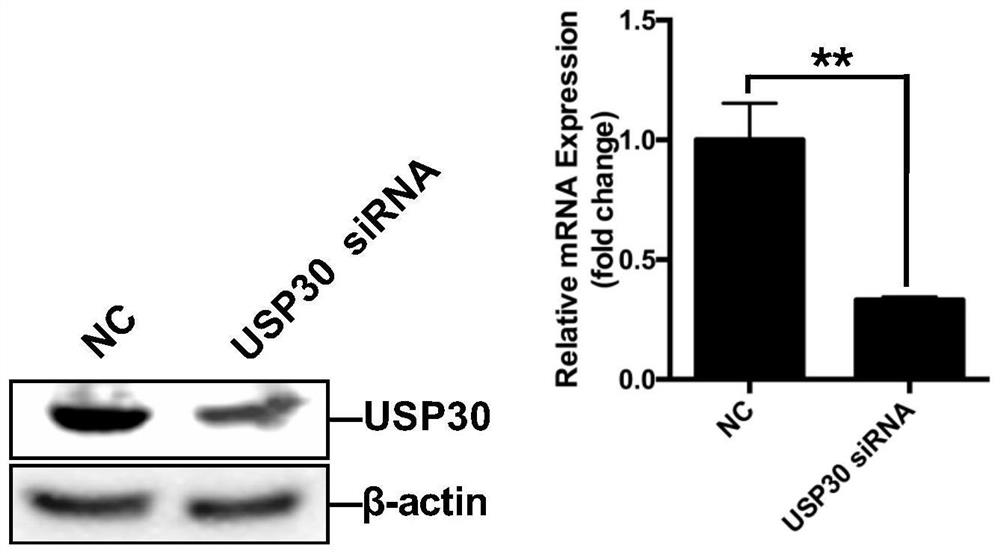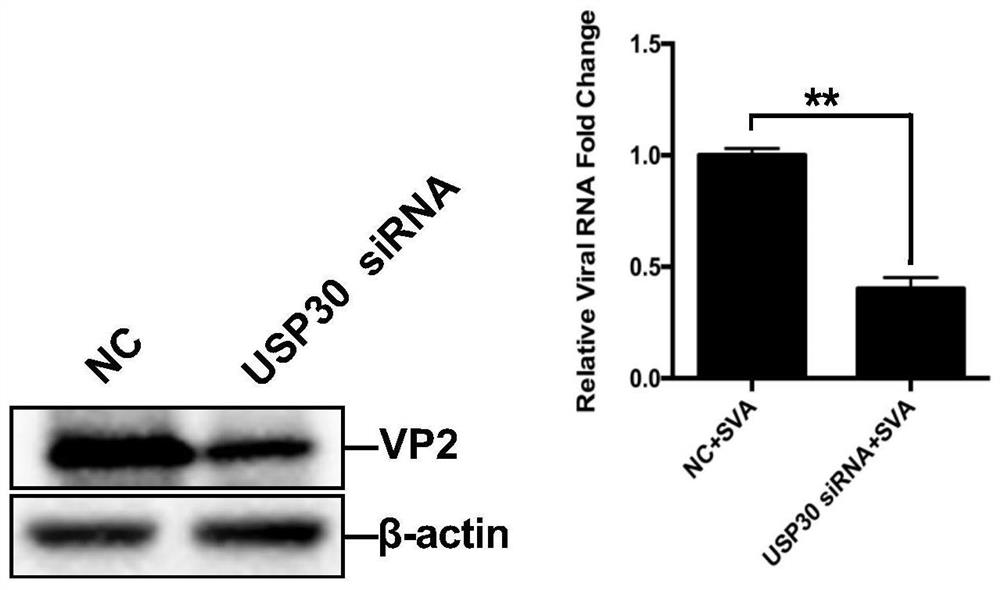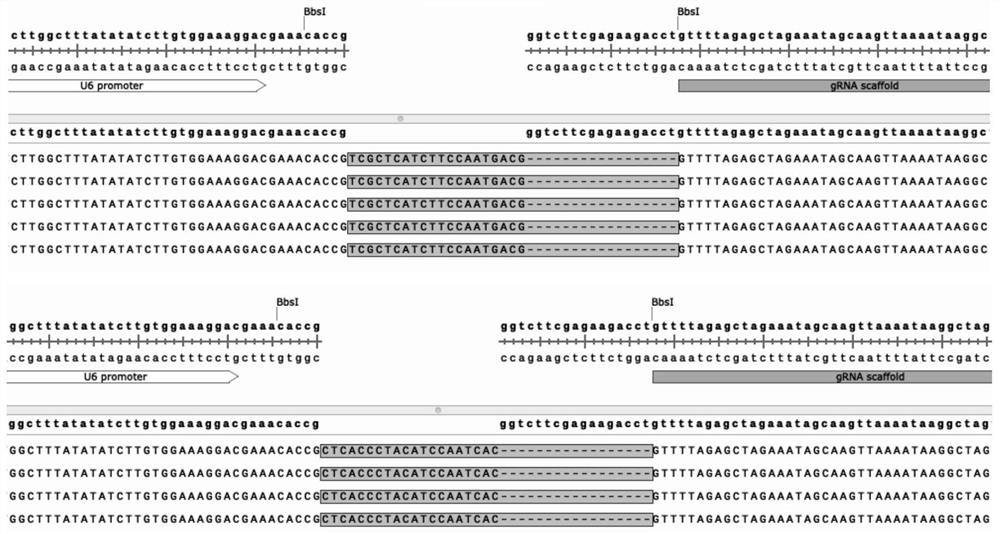Application of USP30 gene as target spot in inhibition of Seneca valley virus replication
A gene and target technology, applied in the application field of inhibiting the replication of Seneca Valley virus, can solve the problems of unclear pathogenic mechanism, the advent of vaccines or drugs, etc., and achieve the effect of inhibiting replication
- Summary
- Abstract
- Description
- Claims
- Application Information
AI Technical Summary
Problems solved by technology
Method used
Image
Examples
Embodiment 1
[0060] Example 1 Results of SVA virus replication after USP30 gene silencing
[0061] 1. Design of small interfering RNA (siRNA)
[0062] Design the RNA interference target sequence of USP30 gene as shown in USP30 siRNA (SEQ ID NO.3-4) and NC siRNA (SEQ ID NO.5-6), the specific sequences are as follows:
[0063] USP30-siRNA-F: 5'-GGAGUACAAGUCUGAAGAATT-3' (SEQ ID NO.3);
[0064] USP30-siRNA-R: 5'-UUCUUCAGACUUGUACUCCTT-3' (SEQ ID NO.4);
[0065] NC siRNA-F:5'-UUCUCCGAACGUGUCACGUTT-3'(SEQ ID NO.5);
[0066] NC siRNA-R: 5'-ACGUGACACGUUCGGAGAATT-3' (SEQ ID NO. 6).
[0067] 2. Construction of USP30 gene silencing cell line:
[0068] (1) Preparation of USP30 gene silencing siRNA Oligo: send the designed interfering RNA sequence to Shanghai Gemma Company for synthesis to obtain the corresponding siRNA Oligo, and use DEPC H 2 O resuspended 1OD of siRNA to make the final concentration 20 μm. Before dissolving, centrifuge at 10,000rpm for 2min, then slowly open the cap of the tube,...
Embodiment 2
[0075] Example 2 USP30 gene knockout HEK293T cell line
[0076] 1. Design of sgRNA targeting USP30 gene
[0077] The Ensemble database was used to query the USP30 gene sequence, and the first exon segment of USP30 in the overlapping region of different transcripts in the genome was located for target design.
[0078] According to the CRISPR / Cas9 design principle, log in to the CRISPR online design website http: / / crispor.tefor.net / to design sgRNA, respectively named: USP30-sgRNAsp1, USP30-sgRNAsp2; at the 5' end of the forward sequence of the sgRNA fragment A CACC sticky end and an AAAC sticky end were added at the 5' end of the reverse sequence as sgRNA oligonucleotides (sgRNA1-oligo) targeting the USP30 gene. The sgRNA1-oligo was synthesized by Jinweizhi Biotechnology Co., Ltd., and the detailed sequence is shown in Table 1.
[0079] Table 1 sgRNA oligonucleotides targeting USP30 gene
[0080]
[0081] Note: The underlined sequence is the added restriction site, and th...
Embodiment 3
[0097] Example 3 Effect of USP30 Gene Knockout HEK293T Cell Line on SVA Replication
[0098] USP30 gene knockout HEK293T cells and wild-type HEK293T cells were used for normal subculture, and the cells were spread to 35 mm cell culture dishes, inoculated with SVA-eGFP virus, and the SVA replication was detected by Western blotting and qPCR methods, respectively.
[0099] Fluorescent detection results such as Figure 7 As shown, the results showed that the replication of SVA in USP30 knockout HEK293T cells was significantly reduced. The results of Western blotting are as follows: Figure 8 As shown, the results showed that the expression level of VP2 protein of SVA in USP30 knockout HEK293T cells was significantly reduced.
[0100] qPCR test results such as Figure 9 As shown, the mRNA levels of the virus in USP30 knockout HEK293T cells were significantly down-regulated compared with wild-type cells after inoculation with SVA.
[0101] The above results indicated that USP30...
PUM
 Login to View More
Login to View More Abstract
Description
Claims
Application Information
 Login to View More
Login to View More - R&D
- Intellectual Property
- Life Sciences
- Materials
- Tech Scout
- Unparalleled Data Quality
- Higher Quality Content
- 60% Fewer Hallucinations
Browse by: Latest US Patents, China's latest patents, Technical Efficacy Thesaurus, Application Domain, Technology Topic, Popular Technical Reports.
© 2025 PatSnap. All rights reserved.Legal|Privacy policy|Modern Slavery Act Transparency Statement|Sitemap|About US| Contact US: help@patsnap.com



